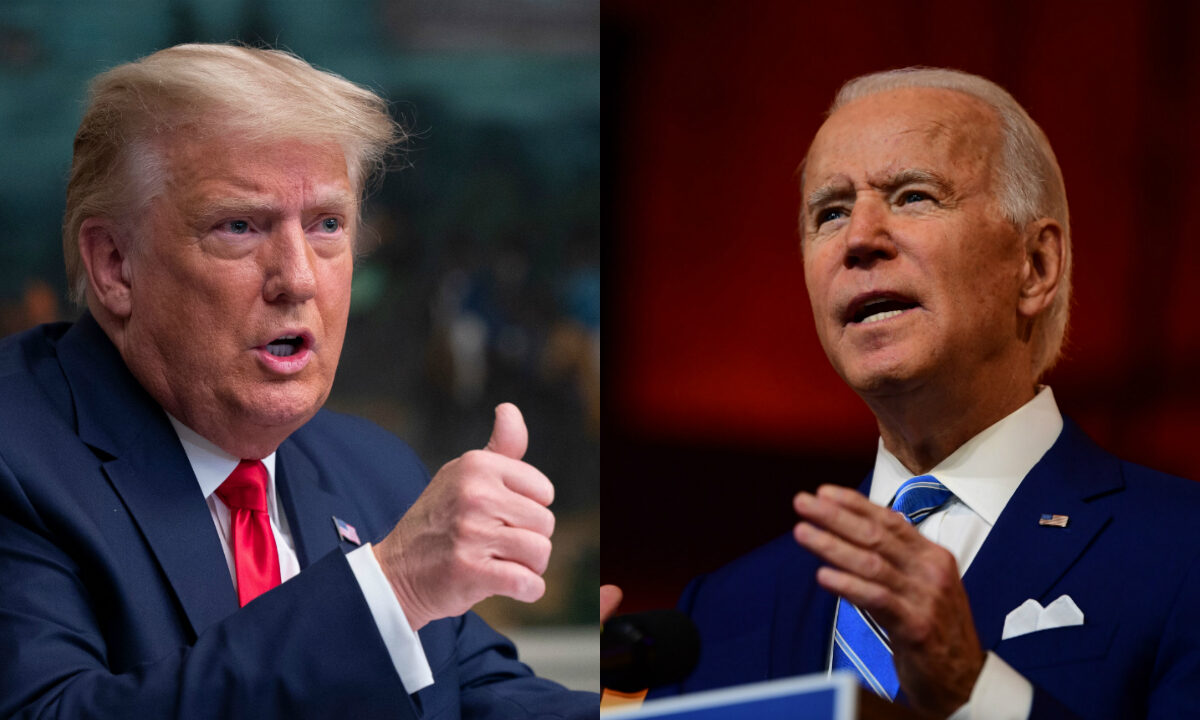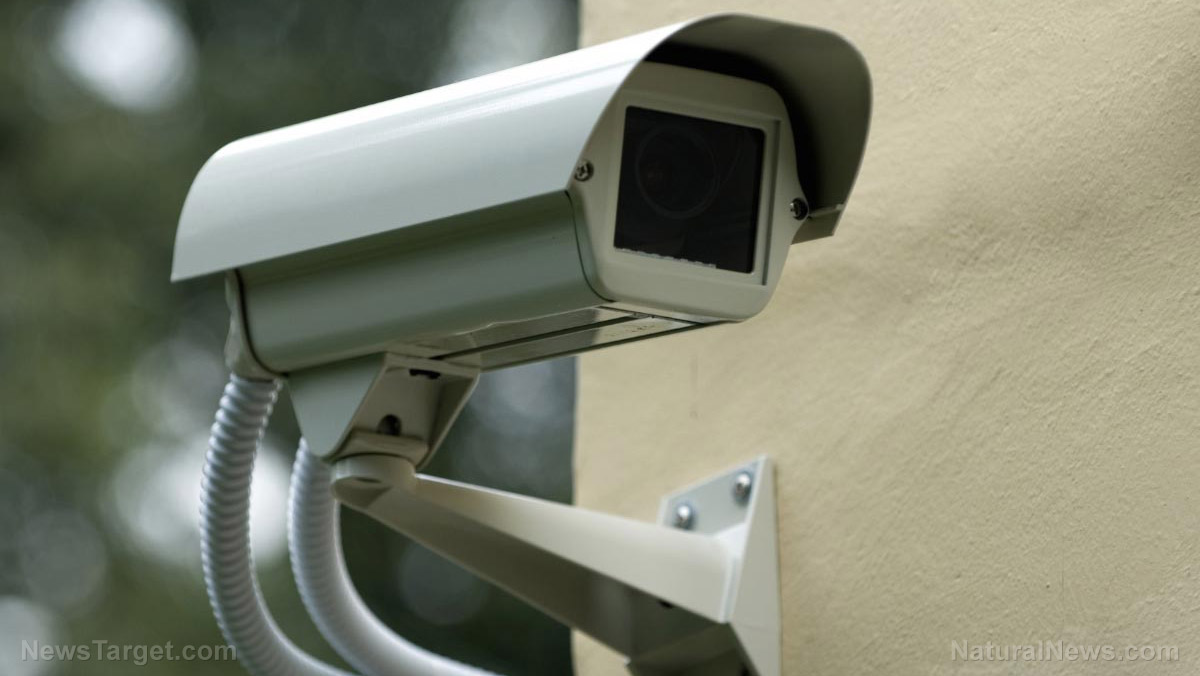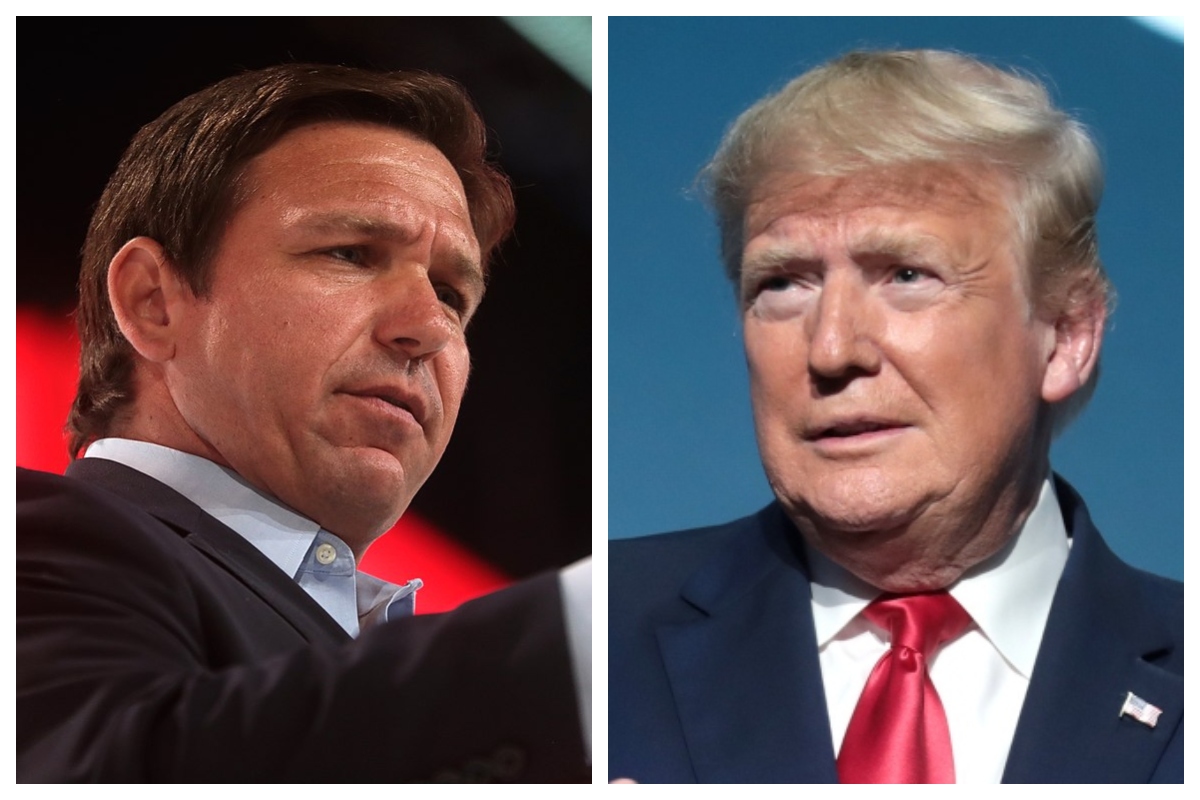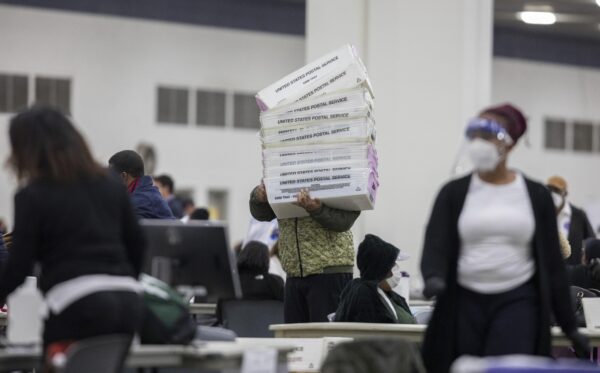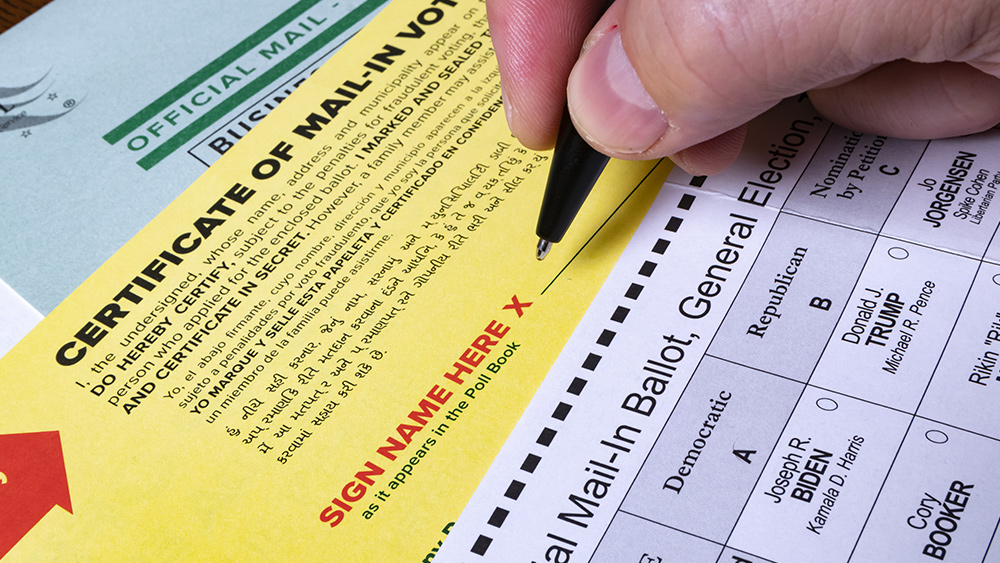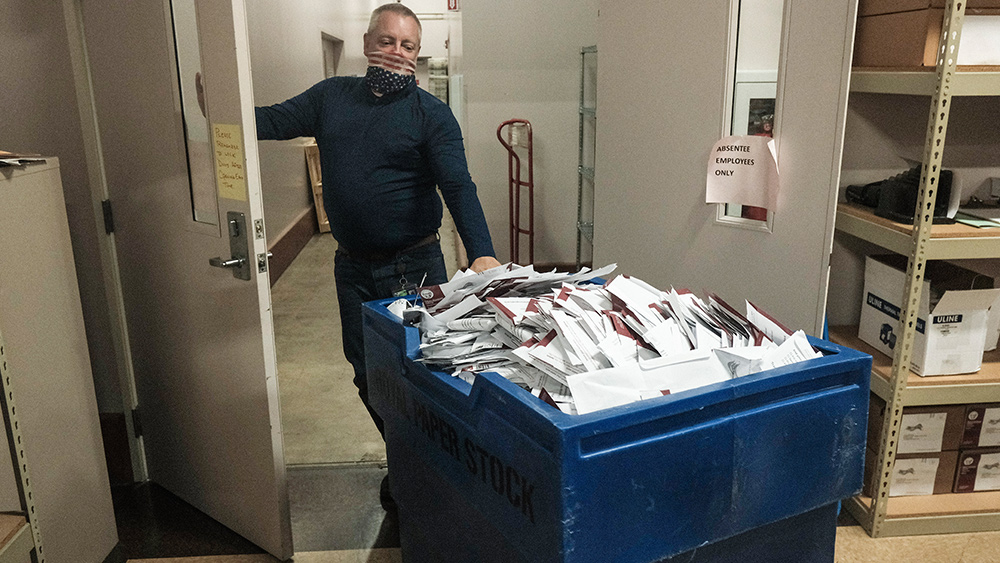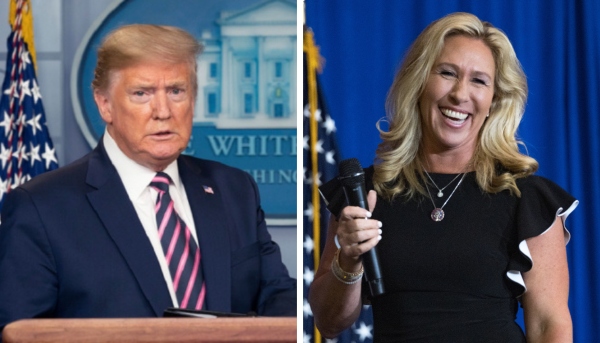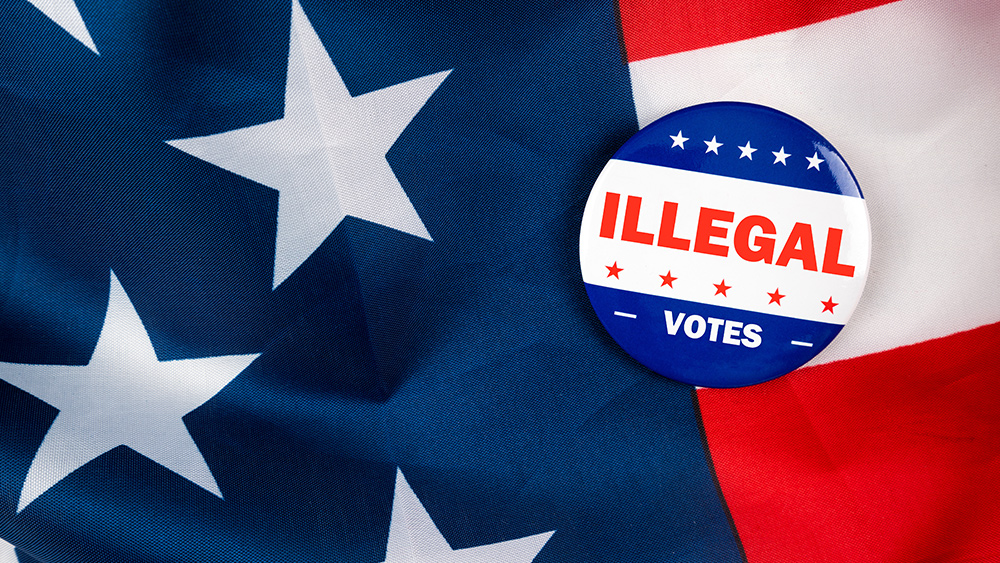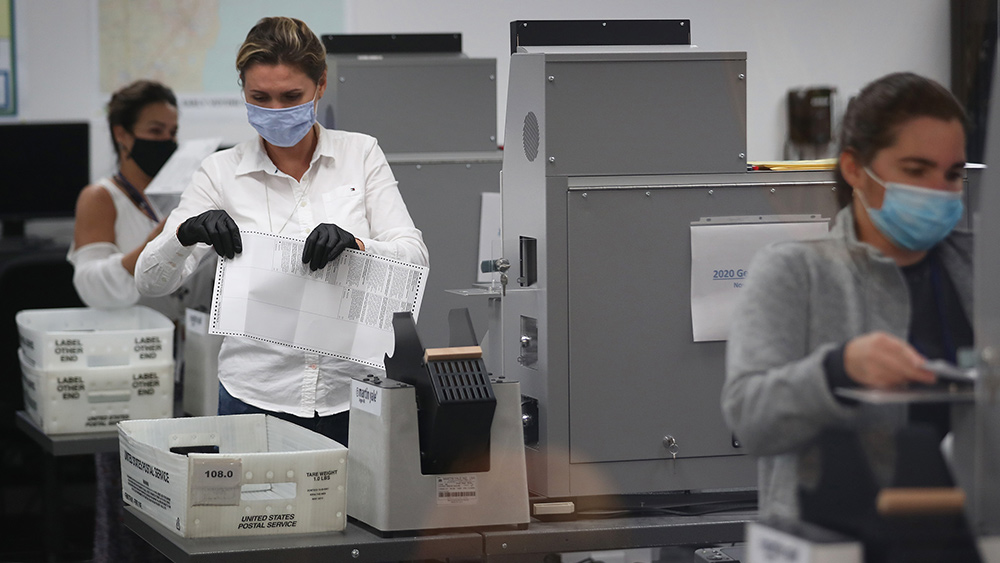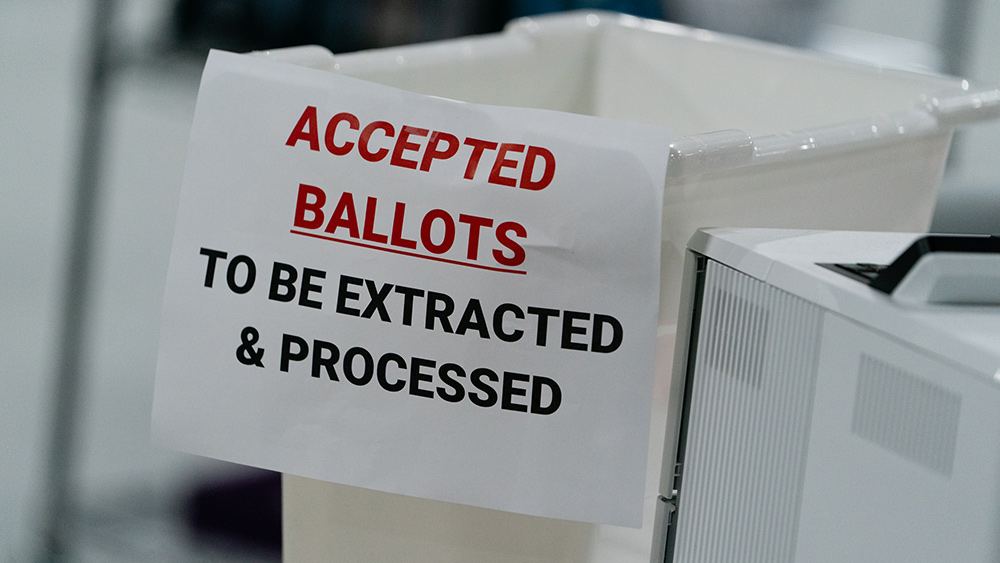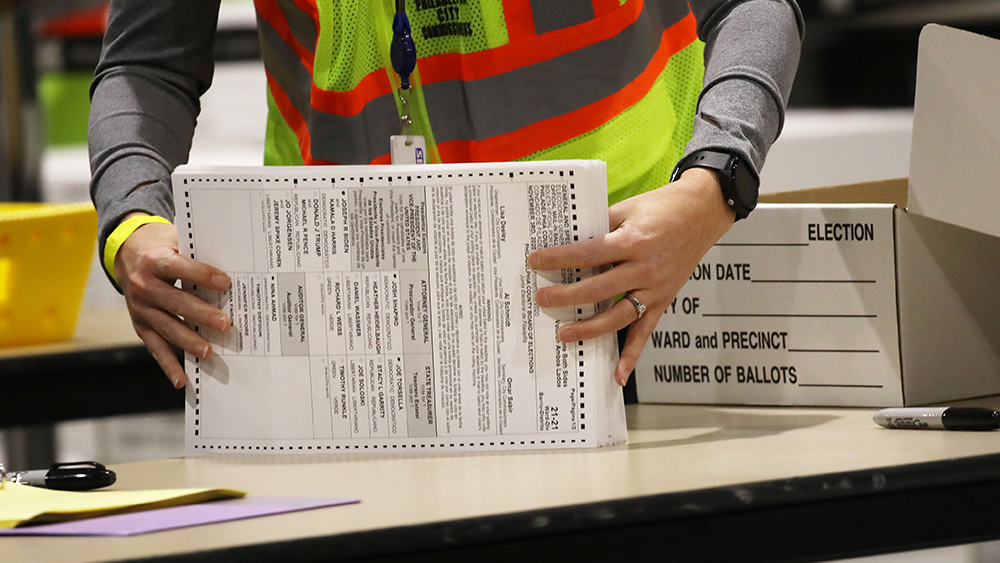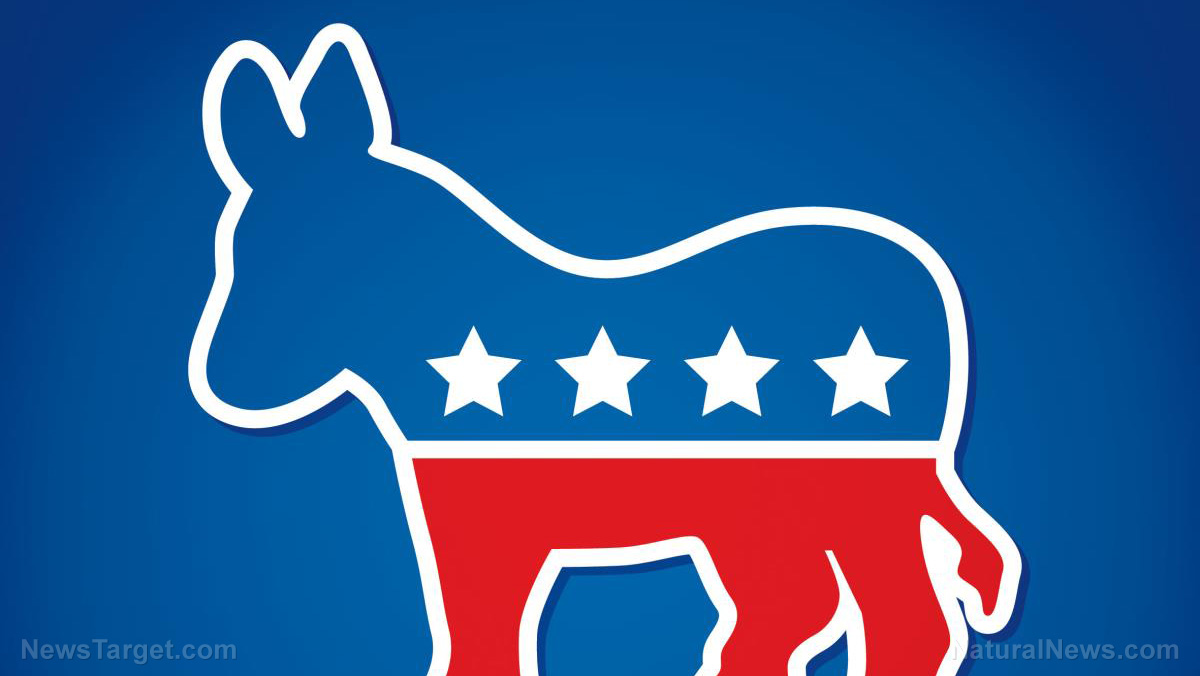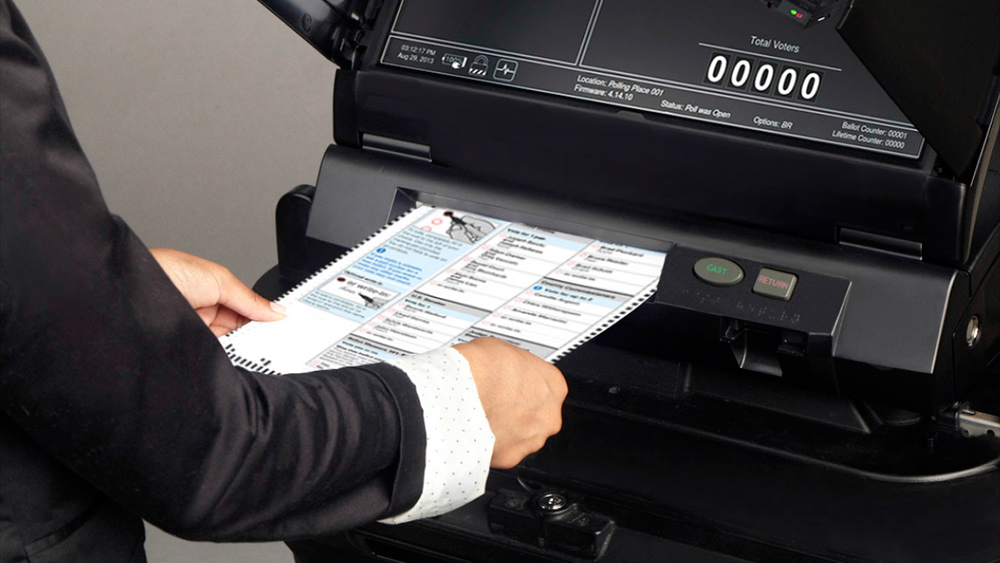Polling company that predicted Trump’s 2016 victory shows him leading in the popular vote and Electoral College
10/30/2020 / By Arsenio Toledo
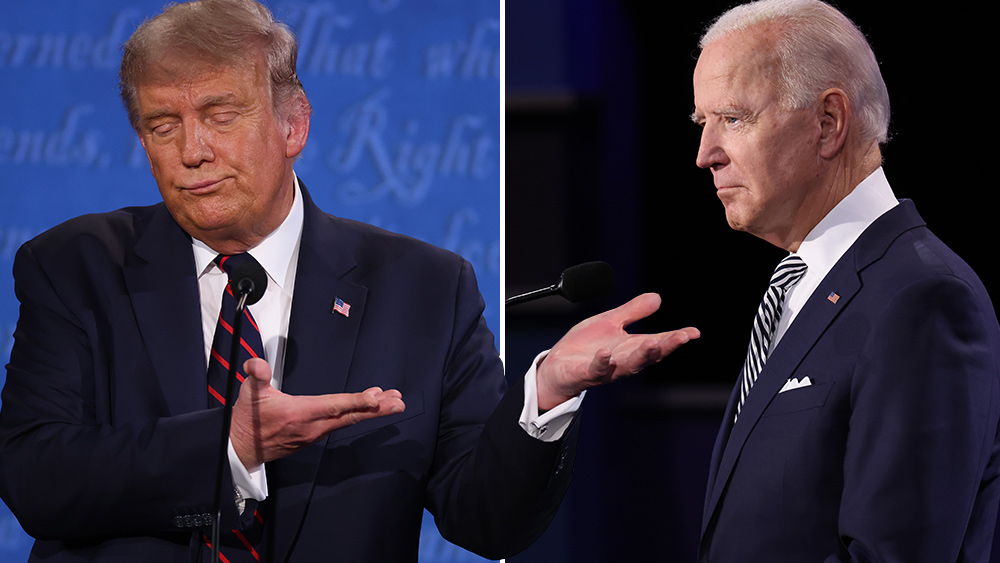
The Democracy Institute, an Anglo-American think tank, published a poll in early October, showing that President Donald Trump has a slight lead against former vice president Joe Biden. Their poll is regarded as an outlier, as almost all major polls show Trump being beaten by Biden.
The Democracy Institute is notable for correctly predicting the Brexit referendum results and the 2016 presidential election. Journalists and political commentators alike have remarked that, although the Democracy Institute is “a relative newcomer to political polling,” its correct predictions have given the think tank a good reputation.
The Democracy Institute’s poll was conducted among 1,500 likely voters between Sept. 30 and Oct. 2. It put Trump ahead of Biden 46 percent to 45 percent. This represents a downward trend from their previous poll in August, where Trump was leading 48 percent to Biden’s 45 percent.
Despite the latest data, the Democracy Institute is still confident that Trump will win in November because their latest poll also shows the president retaining his lead in six battleground states – Wisconsin, Pennsylvania, Minnesota, Michigan, Iowa and Florida – where Trump leads 47 percent to Biden’s 43 percent. (Related: Black, POC businesses in the Twin Cities flocking to Trump as Minnesota Democrats abandon them.)
The Democracy Institute also predicts that Trump will win a total of 320 electoral votes. He will do this by retaining all of the states he won in 2016 and picking up Minnesota, New Hampshire and one electoral vote from Maine’s second congressional district.
The think tank also pointed out how the only way Biden can win is if he can take nine out of every 10 Black votes. The latest poll shows Biden winning just eight out of the 10 votes.
Mainstream polls “misreading the electorate”
Patrick Basham, polling director of the Democracy Institute, recognizes that their data represents an outlier in a sea of polls that predict Biden winning against Trump. Their polling has consistently shown Trump leading Joe Biden in the popular vote and the electoral college vote. To explain the differences, Basham said in an interview that many polling companies are drastically “misreading the electorate.”
“Some polls may just be off, some are advancing an agenda, and there is an intertwining of the two,” said Basham.
Basham believes that many polling companies do not understand how many voters will be motivated to cast their vote. He takes pride in the belief that the Democracy Institute better understands how the electorate will look in November.
Basham mentions how many more mainstream polls believe that the turnout is going to be significantly higher than in 2016. Some outlets estimate a 25 to 30 percent increase in voter turnout. This, Basham argues, makes their data inaccurate, as it relies on polls capturing “many, many more Democrat voters.”
Furthermore, Basham asserted that mainstream media outlets are commissioning polls and offering rewards if those polls show “a certain outcome.”
To back up his claim, he gave two examples. The first was the Opinion Research Corporation, which used to produce polls for CNN. They were fired after the 2016 election even though they accurately predicted Trump beating Clinton in several swing states.
The second is a regular instance in the University of Southern California’s poll wherein they changed their methodology to maintain Biden’s lead, even though their poll in late September showed Trump gaining on the former vice president. The biggest change they made is to underrepresent voters who were registered Republicans.
Polls ignore the phenomenon of the “shy Trump voter”
One of the other factors that make the Democracy Institute’s poll different is that it strongly factors in the phenomenon of the “shy Trump voter,” or a person who is going to vote for the president but is unwilling to make his or her affiliation known to the public for fear of social backlash.
According to Basham, not only did the shy Trump voter exist in 2016 and help push Trump into the White House but that their numbers have grown, and they will have an even greater effect on the upcoming election.
To find out if the phenomenon exists, the Democracy Institute’s poll asked questions such as “If you were a Trump voter, would you tell anybody?” “Would you put a sign on your lawn or your car?”
In fact, they found that only 22 percent of Trump voters were comfortable with their family, friends and coworkers knowing how they were planning to vote.
Basham expects three kinds of shy Trump voters to come show their support for the president through the ballot box: blue-collar male Midwesterners, suburban White women and people of color.

Basham believes that more people of color will vote for Trump. To prove this, he points out how a significant portion of the people the Democracy Institute polled – 73 percent – believe that the government should prioritize law and order and that 32 percent believe combatting the rioting and the violence is the most important issue of the election.
Learn more about the progress of the election and what the Trump campaign is doing to win over more voters by reading the latest articles at Trump.news.
Sources include:
Submit a correction >>
Tagged Under:
2016 election, 2020 election, Biden, Democracy Institute, election, elections, Electoral College, Patrick Basham, polling, President Trump, shy Trump voter, swing states, Trump, Victory, vote, voter turnout, voters
This article may contain statements that reflect the opinion of the author
RECENT NEWS & ARTICLES
Trump.News is a fact-based public education website published by Trump News Features, LLC.
All content copyright © 2018 by Trump News Features, LLC.
Contact Us with Tips or Corrections
All trademarks, registered trademarks and servicemarks mentioned on this site are the property of their respective owners.

